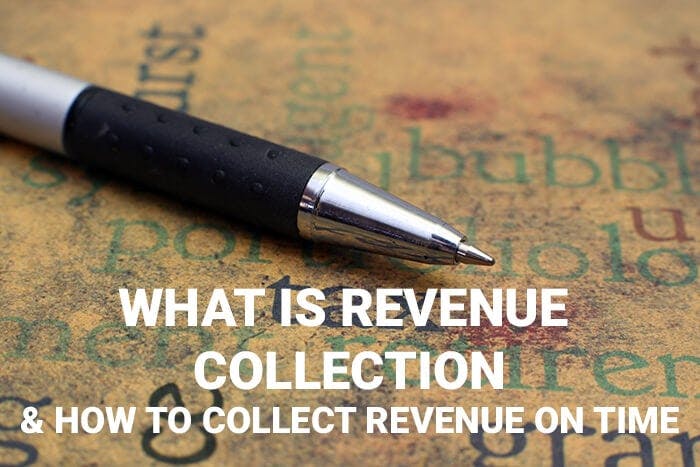What happens when your business receives payments from customers before providing a service or delivering a product? Generally accepted accounting principles (GAAP), shaped and enforced by both the Securities and Exchange Commission (SEC) and Financial Accounting Standards Board (FASB), require companies to record prepayments as unearned revenue.
The SEC has established several financial reporting criteria (based on GAAP) that public companies must meet and adhere to, to recognize revenue. Failure to meet any of these criteria, the company must defer to revenue recognition. In addition, according to the SECs' standards, there must be:
- Collection probability (the ability to make reasonable estimates of amounts to ensure an allowance for doubtful accounts)
- A determined price
- Persuasive evidence of an arrangement
- Completed delivery—ownership of a product or service shifts to the buyer
You can only recognize unearned revenue in financial accounting after delivering a service or product and receiving payment. But since you accept payment in advance, you must defer its recognition until you meet the above criteria. Read on to learn about unearned revenue, handling these transactions in business accounting, and how ProfitWell Recognized from ProfitWell help simplify the process.
What is unearned revenue?
Unearned revenue refers to revenue your company or business received for products or services you are yet to deliver or provide to the buyer (customer). Therefore, businesses that accept prepayments or upfront cash before delivering products or services to customers have unearned revenue. There are several industries where prepaid revenue usually occurs, such as subscription-based software, retainer agreements, airline tickets, and prepaid insurance.
Deferred revenue vs. unearned revenue
Unearned revenue and deferred revenue are similar, referring to revenue that a business receives but has not yet earned. Deferred or unearned revenue is also known as prepaid revenue. These terms refer to advances received from customers. However, since the business is yet to provide actual goods or services, it considers unearned revenue as liabilities, as explained further below.
When do you record unearned revenue?
You record prepaid revenue as soon as you receive it in your company's balance sheet but as a liability. Therefore, you will debit the cash entry and credit unearned revenue under current liabilities. After you provide the products or services, you will adjust the journal entry once you recognize the money. At this point, you will debit unearned revenue and credit revenue.
When you receive unearned revenue, it means you have taken up front or pre-payments before the actual delivery of products or services, making it a liability. However, over time, it converts to an asset as you deliver the product or service. Therefore, you will record unearned revenue on your balance sheet under short-term liabilities—unless you will deliver the products or services a year or more after receiving the prepayment.
How to record unearned revenue
When you receive unearned revenue, you will record it on your business balance sheet first and then make the journal entry. First, you will debit prepaid revenue under current liabilities or the specific unearned revenue account type. Later, you will make the necessary adjusting journal entries once you recognize part of or the entire prepaid revenue amount.
1. Finding unearned revenue on a balance sheet
You report unearned revenue on your business' balance sheet, a significant financial statement you can generate with accounting software. You record it under short-term liabilities (or long-term liabilities where applicable). Since it is a cash increase for your business, you will debit the cash entry and credit unearned revenue. Where unearned revenue on the balance sheet is not a line item, you will credit liabilities.
On a balance sheet, the "assets" side must always equal the "equity plus liabilities" side. Hence, you record prepaid revenue as an equal decrease in unearned revenue (liability account) and increase in revenue (asset account). It ensures the equation balances.
2. Making journal entries for unearned revenue
Under the liability method, you initially enter unearned revenue in your books as a cash account debit and an unearned revenue account credit. The debit and credit are of the same amount, the standard in double-entry bookkeeping. Additionally, you record each transaction in two accounts. The first journal entry reflects that the business has received the cash it has earned on credit.
For example, suppose on January 1, 2020, SaaS Company X makes $40,000 advanced collections from its customers. The entry would be: debit $40,000 on the cash account and credit $40,000 on the unearned revenue account.
3. Adjusting journal entries
Once the business provides the products or services paid for, you will make an adjusting entry. Here, you will debit the unearned revenue account for the amount you recognize and credit the product or service revenue account for a similar amount. Therefore, you will make two journal entries for the unearned revenue for receiving it and earning it.
From the example above, suppose SaaS Company X renders services worth 20% of the prepaid revenue at the end of January 2020. The adjusting journal entry would be: debit the recognized $8,000 on the unearned revenue account and credit $8,000 on the service revenue account.
How to calculate unearned revenue (with examples)
Calculate your monthly unearned revenue by dividing the total amount of cash you received from customers by the number of months (period) for which you agreed to provide services. For instance, suppose you accepted $5,400 to clean an office building for six months. Your monthly unearned revenue will be:
- $5,400 (total amount received)/6 (number of months) = $900
You can also calculate your unearned revenue quarterly if you wish by similarly dividing the amount of cash you received for the year's supply of services by four. For example, suppose your landscaping business received $36,000 from clients under your annual plan. Your quarterly unearned revenue will be: $36,000/four = $9,000.
Unearned revenue FAQS
What type of account is unearned revenue?
Unearned revenue is a type of liability account in financial reporting because it is an amount a business owes buyers or customers. Therefore, it commonly falls under the current liability category on a business's balance sheet. It illustrates that though the company has received cash for its services, the earnings are on credit—a prepayment for future delivery of products or services.
Is unearned revenue debit or credit?
Since prepaid revenue is a liability for the business, its initial entry is a credit to an unearned revenue account and a debit to the cash account.
Is unearned revenue an asset?
No, unearned revenue is not an asset but a liability, and you record it as such on a company's balance sheet.
Is unearned revenue a liability?
Unearned revenue is a liability since it refers to an amount the business owes customers—prepaid for undelivered products or services. In addition, it denotes an obligation to provide products or services within a specified period.
Where does unearned (prepaid) revenue go on a balance sheet?
Unearned revenue represents a business liability that goes into the current liability section of the business' balance sheet.
What types of industries and sectors have unearned revenue?
Industries that bring in unearned revenue provide goods and services on a membership or subscription basis and have a refund policy for cancellations. Examples include cloud-based software providers, fitness centers, or the magazine and newspaper publishing industries.
What are some examples of unearned revenue?
An annual subscription for software licenses is an unearned revenue example. Others include advance rent and prepaid insurance. Recognizing deferred revenue is common for software as a service (SaaS) and insurance companies.


